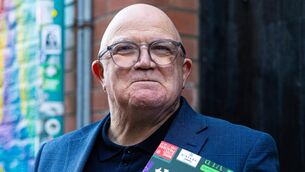Marley and me: Irish people share their memories of Bob Marley and his one visit to Dublin

Bob Marley at Dalymount Park. Picture: Eric Luke
(Bob Marley's last outdoor concert before his death at the age of 36 was at Dublin’s Dalymount Park, Sunday, July 6, 1980. It was a sunny afternoon gig in which he referenced “the Irish struggle” before performing Redemption Song.)
In 1979, I was starting to build my career as a promoter. I heard Bob Marley was coming to Europe. I found out who the European promoter was so I decided I'd go to London. I sat around for a few days in his office, waiting to see the guy. He hadn't even thought about coming to Ireland. I proposed the RDS in Dublin. When I went to the RDS, they didn't want to take the gig because he was a Rastafarian. So I went back again to England and I said, “What about an outdoor gig at Dalymount Park?” I said, “I’d have to charge £10 a ticket.” They said, “No, Bob doesn’t like to over-charge for tickets.” We eventually agreed a ticket price of £7 in stores.
It was the first big gig that children were allowed to get in free with their parents.
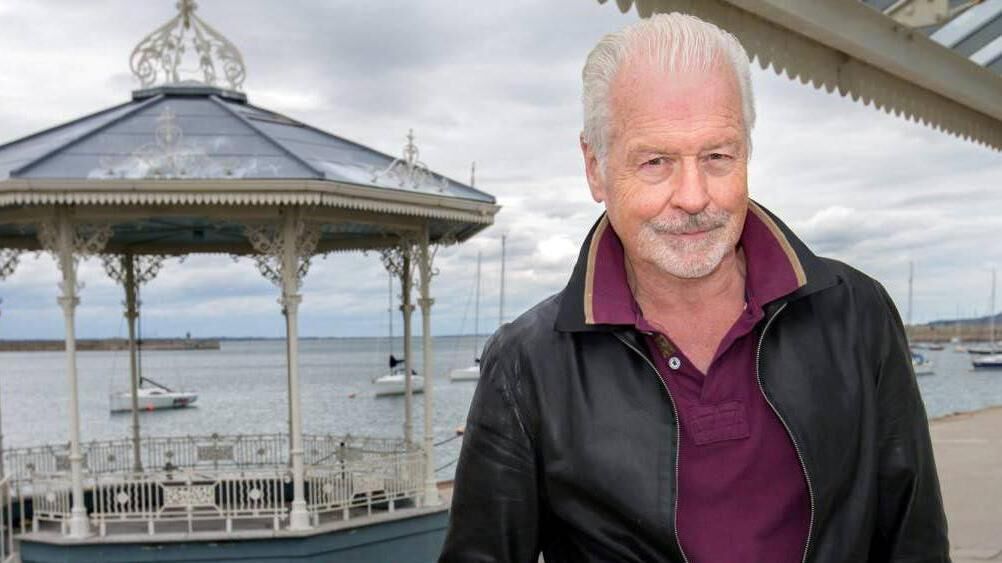
The tickets didn't fly out the door, but in the end we sold about 23,000. There was about 5,000 counterfeits. In those days, tickets were printed by normal printer. There were no watermarks on them. Dublin was full of gangsters in the 1980s.
The thing I remember most from the morning of the gig was the arrival of a couple of gangsters from a notorious Dublin crime family. They got into the backstage area because the bouncers we hired were afraid to stop them. Even though the bouncers were tough guys, they weren’t going to take them on. They wanted to see Bob. They had a present for him.
I said to the crime family boss, “It’s out of my hands. I can’t get you in to see Bob.” He said, “Who’s in charge?” I said, “The tour manager.” The tour manager said, “Nobody sees Bob before the show. It’s not done.” The mob boss had a whisper in his ear.
About 10 minutes later, the tour manager came out and said: “Only one of you can go in – yourself.” So the mob boss went into Bob Marley and presented him with a package with apparently about a pound of dope in it. He knew his entourage wouldn't be able to bring any marijuana through customs so he thought he was doing him a favour.
The gig was an enormous success. We took a lot of money on the day, which is unusual nowadays. We had a caravan outside Dalymount Park and I remember us putting all the notes into black, plastic sacks. I met Bob at the airport when he was leaving the next day. He didn't look well. His skin was off-colour.

I remember two things from Bob Marley’s gig at Dalymount Park in 1980.
First, when the kit was being set up, Bob Marley, the band and some roadies started playing football, about 10 or 12 of them, with jumpers for goalposts on the pitch. The groundsman came along after about 10 minutes and said, “Here, you have to stop. You can’t be playing here.” Second, there was a little cabin beside the stage, which was basically their makeshift dressing room. I had to knock on the door and ask Bob Marley – or his manager – if they wanted to be announced on stage. I knocked on the door, and I know it sounds like a cliché, but the amount of smoke that came out, you’d think the place was on fire. The guy who opened the door was Bob Marley.
I said, “Bob, how are you doing? I’m the stage announcer. Would you like to be announced on stage?” He said, “No, thank you very much. What happens is that the I Threes [female backing singers] go out first and I’ll walk out then.” He was as laidback as you would expect for someone who smoked so much ganja. I don’t remember much about the gig, even though I loved Bob Marley.
He was a superstar by the time he played in Ireland, an icon, a prophet, but there wouldn’t have been pictures on the front pages of Irish papers the next day. The gig didn’t have that kind of impact, but he opened up the western world to reggae, writing political lyrics with a beautiful beat and great tunes. He even had pop songs like Three Little Birds, which everybody could sing along to. Stir It Up has one of the greatest intros to any song. The whole package. He was brave in speaking out. The attempted assassination in Jamaica. Crazy carry on. And one thing above all helped him: he was cool.
I remember it was a lovely sunny day for the Dalymount Park gig. There was a party atmosphere. It was a novelty at the time – a stadium gig in Ireland. There was a big stage at one end of the pitch. I was used to covering indoor gigs, but this was very grand. It had a big Haile Selassie motif with multi-colours behind Bob Marley and the band. There was about 12 or 14 people on stage.
With the band and the female singers in their colourful clothes, and Bob Marley with his dreadlocks flowing, it was very exotic compared to, say, Phil Lynott or Rory Gallagher or Christy Moore with maybe three other performers max on stage.
I knew his dreadlocks were going to be the picture. I spent most of the gig trying to capture them as they went flying. It was about capturing that fraction of a second. One of the shots worked out well, which is hanging in the Bob Marley Museum in Jamaica.
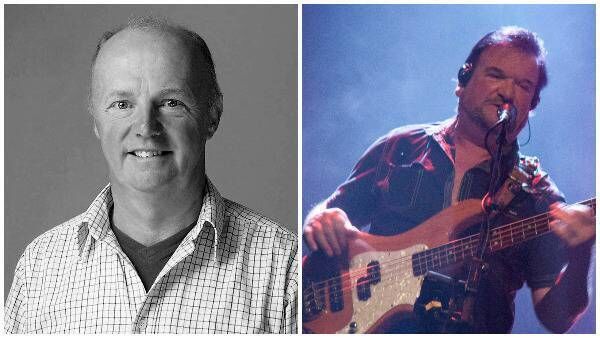
It was such an honour for us to get the support act gig. I was a huge fan of Bob Marley. Still am. For an open-air gig, the sound was incredible. The songs sounded better on the day than the records I had. It was knockout stuff. They were colourful as well because The Wailers were all dressed in the Jamaican flag colours with crochet-woollen hats on their heads. It was like a happening.
When Bob Marley came out on stage, he was flanked by six bouncers, three on each side. Off stage, he kept himself to himself. He stayed in the dressing room – as did the I Threes – whereas the band were back stage with us, having a laugh. I said to one of them, “It’s amazing to meet you, having come all the way from Jamaica.” He said, “Yeah, it’s great to be here. An awful lot of people do say we talk like Kerry people.”
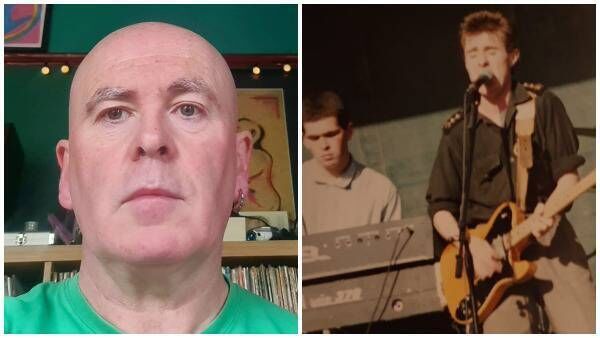
There was a singer from Jamaica called Man Ezeke. He used to come to Ireland and play the Munster showband circuit in the early 1980s. He wanted a band to play Bob Marley covers – and we were sold to him as a reggae band – so we did a tour with him one summer, playing four or five gigs a week, June through August. It made us realise that Bob Marley meant so much to people in Ireland. People really felt a connection to him.
Bob Marley and The Wailers came out of a very volatile political situation in Jamaica. Rastas weren’t treated well by the police. Reggae was the music of oppression for a lot of people. In Ireland in the 1970s and early 80s, we were very conscious that we were an oppressed people for nearly 800 years because the conflict in the North was kicking off like mad. People related to a lot of what he was saying.
I was 15 years old when I went from Killarney with two friends from school to the Bob Marley gig at Dalymount Park. We went by train. We procured a bottle of whiskey to take with us. There was a historic precedent. I had heard from a friend that the preferred way to go to a Rory Gallagher concert was with whiskey and a lump of cheese.
On the journey, we began to notice people from different parts of the country going to the concert. A person living a relatively alternative life in 1980s Ireland was very noticeable because everybody of a certain age dressed the same. Haircuts were a marker – whether it was shaved like a punk or long like a hippie. Second-hand clothes, the Jamaican colours at the Bob Marley concert, children with yellow PVC raincoats. These were signs that people had opted out in some way.
On stage, the physicality of Bob Marley was a surprise. His hair was incredibly long – long enough to touch the back of his knee. I would never have seen a Rasta prior to that. He was a surprisingly small, slight figure. He also had a curious dance. Seeing it live was burnt into my consciousness.
I moved to London in 1985. I live in a British African Caribbean area in south London. In the 1970s, to have a Jamaican singer with international appeal was incredibly important for that community. There are similarities with the Irish immigrant experience. He’s a Luke Kelly-like figure on a global scale. For self-definition in terms of status in the United Kingdom, Marley and reggae music is crucial.
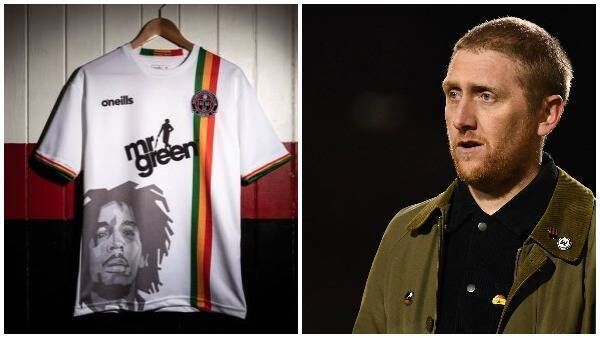
We’re very proud that Bob Marley played his only Irish gig at Dalymount Park. A lot of Bohs fans were at the concert. We have a Bob Marley mural inside the stadium. There are some great press photos when a player scores a goal and behind him is the big mural by Niall O Lochlainn.
During games, Bohs fans will sing Three Little Birds: “Don’t worry about a thing …” The reason they sing it is because in 2011 we nearly lost the stadium where we have played since 1901. Singing “every little thing gonna be all right” is the fans saying they weren’t willing to let the club go out of existence. It’s about defiance.
In 2019, we came up with a Bob Marley concept jersey but there was a copyright dispute so we withdrew the jersey from our catalogue. It was frustrating because we had done everything correctly with the image rights company we bought our image from, but they didn’t have the correct licence themselves. We kept the design and changed the picture of Bob Marley to a fist being held aloft like the one used by Black Panthers and solidarity movements, which raised €20,000 for our fund to bring asylum seekers to games.
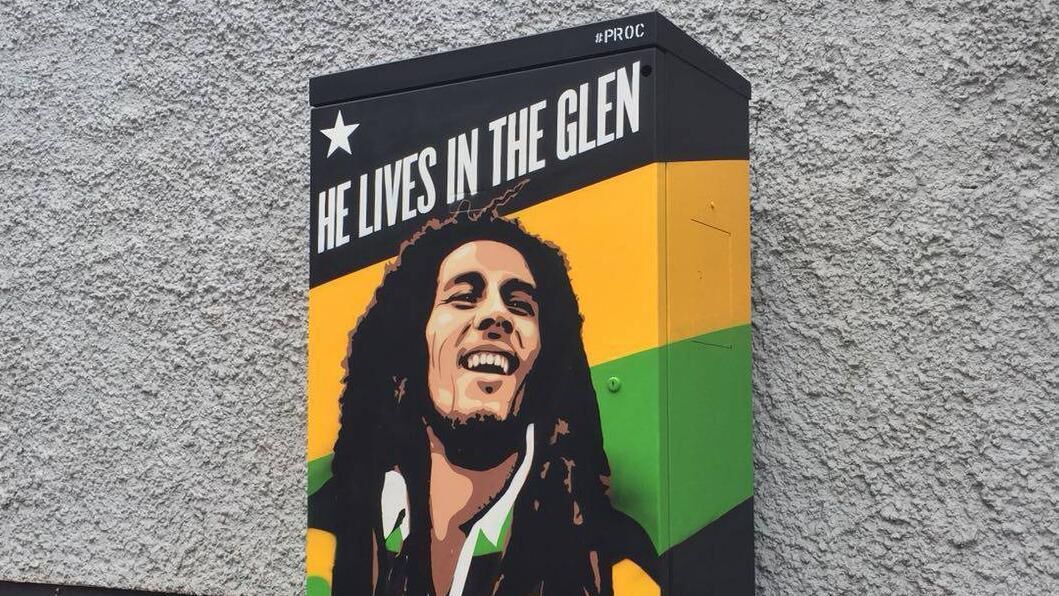
I painted a lot of the electrical boxes around Cork city. I work with the guy at the People’s Republic of Cork. He comes up with ideas and throws them my way. I make an illustration and go and do them. It was his idea to paint the “He lives in the Glen” box on Leitrim Street, which is in town but on the way to Glen Rovers hurling club.
I’m 40. When I was young in Cork it seemed everyone listened to Bob Marley. Maybe it was a northside thing. I’m from Mayfield. Bob Marley was cool. He was always talking about money not being a thing. He felt like he had a duty to people to speak the truth. I admire that.
(See more of Gareth's art at www.gwjoyce.com)




